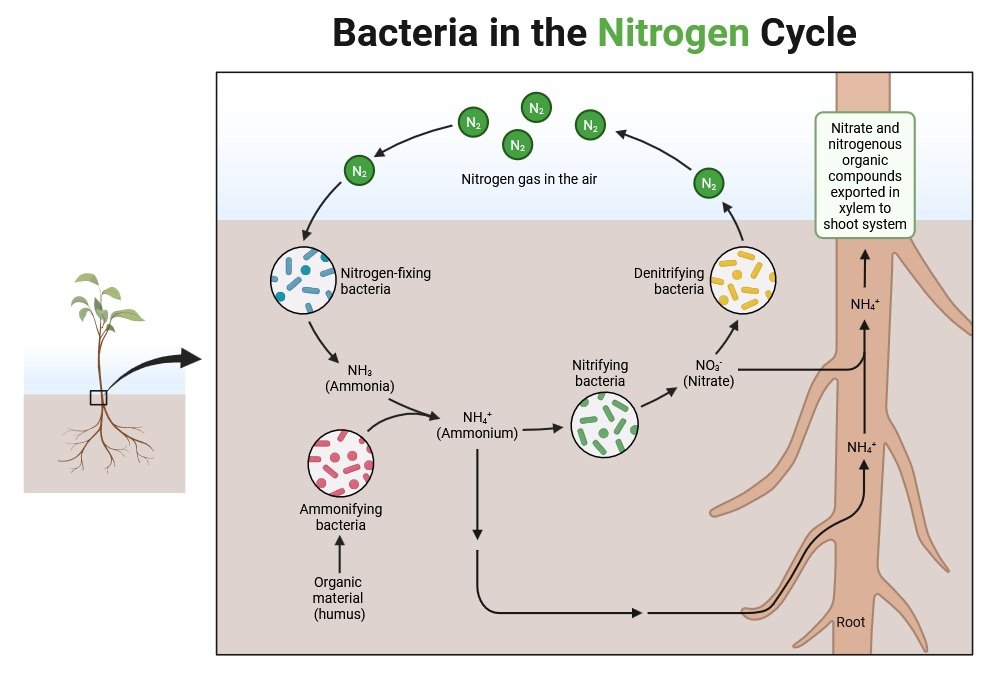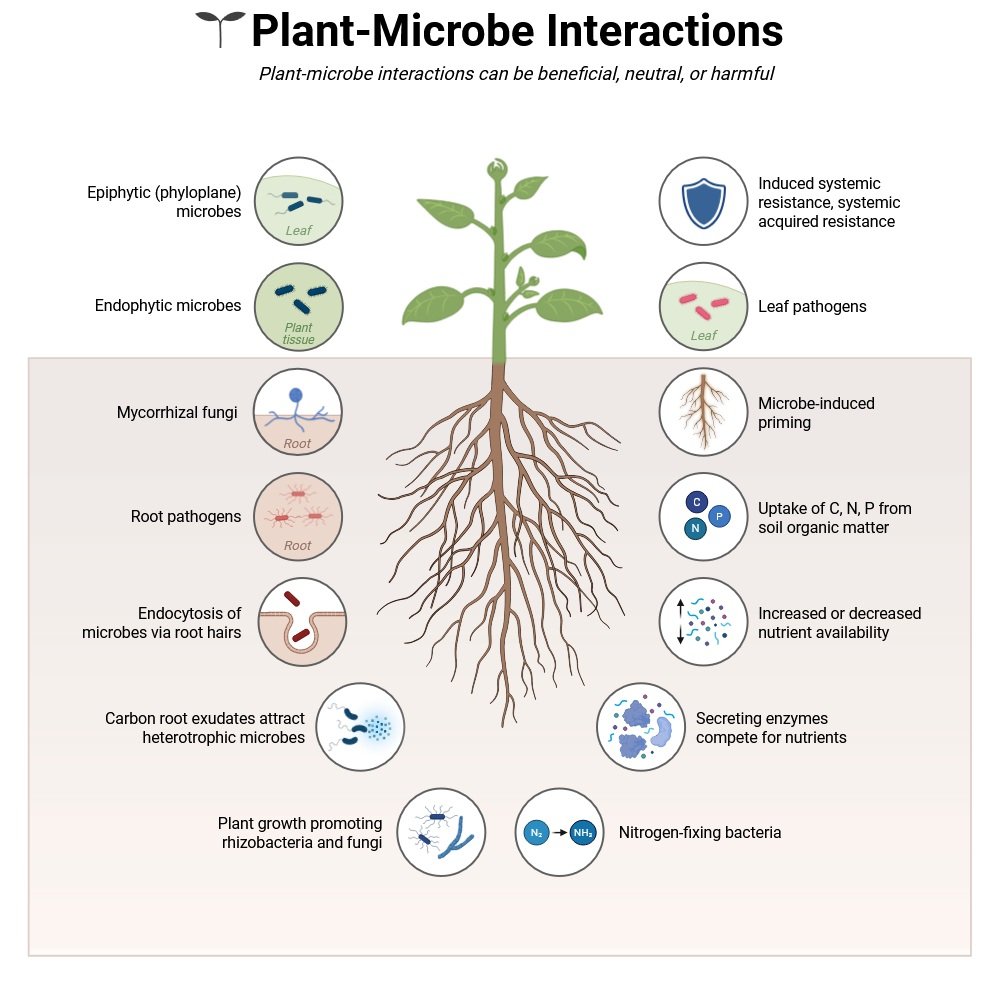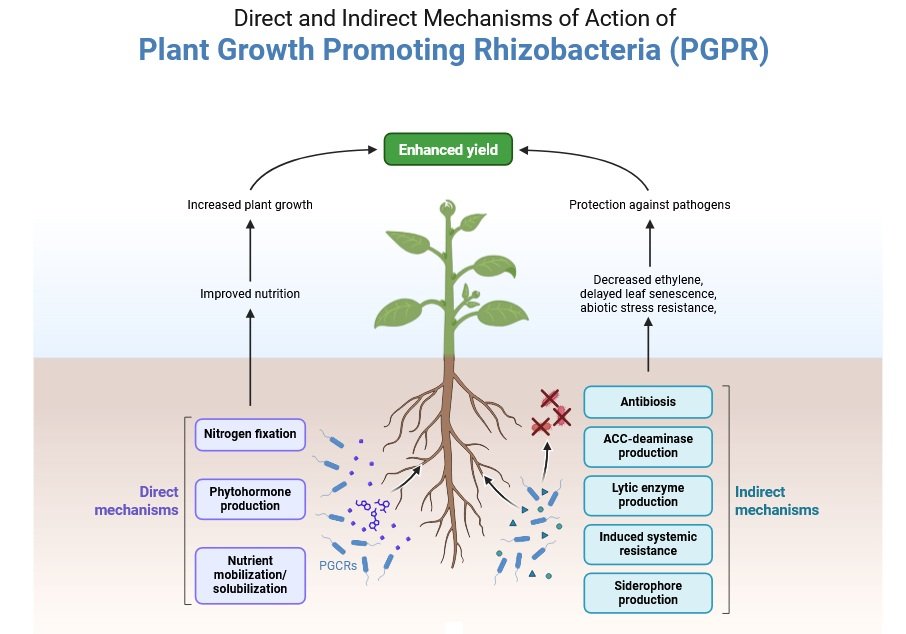Table of Contents
ToggleIntroduction
Agriculture microbiology plays a vital role in modern farming by exploring how microorganisms interact with plants, soils, and the environment. With the increasing need for sustainable agriculture, microbes are emerging as biofertilizers, biocontrol agents, and soil health enhancers. They not only reduce reliance on chemical inputs but also boost crop productivity and resilience to climate stress.
This article highlights seven major agriculture microbiology research topics, focusing on phosphate solubilizing bacteria, potassium solubilizers, nitrogen-fixing microbes, plant physiology, green algae isolation, PGPR, and mycorrhizal fungi. Each topic discusses its overview, mechanisms, and future perspectives in sustainable agriculture.
1. Phosphate Solubilizing Bacteria (PSB)
Overview
Phosphorus is an essential nutrient for plant growth, yet most soil phosphorus exists in insoluble forms. Phosphate Solubilizing Bacteria (PSB) such as Bacillus, Pseudomonas, and Azotobacter release organic acids and phosphatase enzymes that convert insoluble phosphates into soluble forms. This process enhances phosphorus availability and crop productivity.
Future Perspectives
- Isolation & Identification: Detecting PSB on Pikovskaya’s agar by halo zones.
- Mechanism of Action: Acidification of the rhizosphere to release bound phosphates.
- Quantitative Analysis: Measuring solubilization efficiency in broth cultures.
- Plant Growth Promotion: Evaluating PSB through pot experiments and germination trials.
- Molecular Studies: Developing consortium biofertilizers for better efficiency.
References
2. Potassium Solubilizing Bacteria (KSB)
Overview
Potassium is essential for enzyme activation, water regulation, and yield improvement. However, much of it is locked in minerals like feldspar and mica. Potassium Solubilizing Bacteria (KSB) such as Bacillus and Klebsiella release potassium through organic acid synthesis and pH reduction.
Future Perspectives
- Developing stable KSB formulations for biofertilizers.
- Integrating KSB with plant growth-promoting microbes.
- Conducting multi-location field trials.
- Reducing dependence on costly chemical fertilizers.
References
3. Nitrogen-Fixing Bacteria (NFB)
Overview
Although nitrogen is necessary for plant proteins, nucleic acids, and other things, plants are unable to utilize atmospheric N2 directly. Using the enzyme nitrogenase, nitrogen-fixing bacteria transform atmospheric nitrogen into usable forms, such as ammonia. Types include symbiotic (e.g. Rhizobium, Frankia) in legumes or actinorhizal plants, and free-living or associative species (such as Azotobacter and cyanobacteria) that thrive in soil or the rhizosphere. Inoculating NFB has a number of beneficial effects, including higher soil ‘N’ concentrations, better root development, enhanced plant growth, and occasionally improvements in the composition of the microbiome and other soil enzyme activities.

Future Perspectives
- Extending NFB use to non-legume crops like cereals.
- Using omics (genomics, transcriptomics, proteomics) to understand nitrogen fixation.
- Designing liquid and powder inoculants with high stability.
- Exploring co-inoculation strategies with PSB, KSB, and PGPR.
- Engineering crops to fix nitrogen independently.
References
4. Plant Physiology and Microbial Interactions
Overview
Plant physiology is the study of a plant’s essential functions, such as photosynthesis, respiration, nutrient absorption, water interactions, growth, and responses to environmental stress. Through hormones and signaling pathways, it describes how plants regulate their development, interact with their environment, and respond to biotic/abiotic challenges. Stress physiology, mineral nutrition, photosynthetic efficiency, and transport systems are among the core areas.

Future Perspectives
- Developing drought- and salinity-tolerant crops.
- Integrating omics approaches for regulatory network analysis.
- Enhancing photosynthetic efficiency with microbial interactions.
- Combining plant physiology with biofertilizer technologies.
References
5. Isolation of Green Algae
Overview
Photosynthetic microbes known as green algae (Chlorophyta) can be found in soil, freshwater, and marine habitats. Water/soil samples are often collected, filtered, and cultured on selective media (such as BG-11 or Bold’s Basal Medium) in isolation, under regulated light and aeration. Microscopy, serial dilution, streak plating, and single-cell isolation are examples of methods. The pigments, proteins, lipids, and potential applications of green algae in the biofuels and bioproducts sectors are highly valued.
Future Perspectives
- Developing lipid-rich strains for renewable energy.
- Extracting antioxidants and pigments for food and pharma.
- Using wastewater as a growth medium to reduce costs.
References
6. Plant Growth-Promoting Rhizobacteria (PGPR)
Overview
Beneficial soil microorganisms called Plant Growth-Promoting Rhizobacteria (PGPR) colonize plant roots and promote development through processes like phosphate solubilization, nitrogen fixation, and the creation of phytohormones (IAA, gibberellins) and pathogen control in plants. Azotobacter, Azospirillum, Bacillus, and Pseudomonas are a few examples of common PGPR. By lessening reliance on chemical fertilizers, they are essential to sustainable agriculture.

Future Perspectives
- Developing PGPR consortia for crop-specific use.
- Engineering PGPR for stress tolerance (salinity, heavy metals).
- Integrating PGPR with nanotechnology and precision farming.
- Promoting soil carbon sequestration and nutrient cycling.
References
7. Role of mycorrhizal fungi in nutrient uptake
Overview
Mycorrhizal fungi improve the absorption of vital nutrients like phosphorus, nitrogen, and micronutrients by forming symbiotic relationships with plant roots. Hyphal networks allow them to expand the root surface area and better explore the soil. In exchange, plants give the fungi carbohydrates. Ectomycorrhizae and arbuscular mycorrhizae (AMF) are among the most prevalent kinds.
Future Perspectives
- Commercial use of mycorrhizal inoculants in farming.
- Enhancing drought and salinity tolerance in crops.
- Integrating fungi into organic farming
- Using microbial consortia for efficient nutrient cycling.
References
Conclusion
Agricultural microbiology provides innovative pathways toward sustainable and eco-friendly farming. Microbes such as PSB, KSB, NFB, PGPR, algae, and mycorrhizal fungi act as natural biofertilizers, improve soil fertility, and enhance plant resilience against stresses. Future research should focus on microbial consortia, genetic engineering, omics studies, and biofertilizer commercialization to ensure food security in a climate-challenged world.
Frequently Ask Questions (FAQs)
Q1. What are biofertilizers in agriculture microbiology?
Biofertilizers are living microorganisms that improve nutrient availability, soil health, and crop productivity naturally.
Q2. How do phosphate solubilizing bacteria benefit plants?
They convert insoluble soil phosphates into soluble forms, reducing the need for chemical fertilizers.
Q3. Can nitrogen-fixing bacteria work with cereals?
Yes, research is focusing on developing associative NFB strains for cereals like rice and wheat.
Q4. Why is PGPR important for sustainable farming?
PGPR enhance plant growth through nutrient solubilization, hormone production, and disease suppression.
Q5. What role do mycorrhizal fungi play in crop nutrition?
They improve nutrient absorption, soil structure, and plant tolerance to stress conditions.
Also Read
- Food Microbiology Research Topics: Emerging Trends and Future Perspectives
- Antibiotics: Introduction, History, Mechanism and Applications
- Culture Staining Techniques in Microbiology: Types, Methods, and Applications
- HIV and AIDS: Structure, Transmission, Symptoms, Diagnosis and Prevention
- Parasitology: An Overview of Parasites, Diseases, and Host Interactions
- Spirulina: The Superfood Microalga with Limitless Potential
- Molecular Blotting: Techniques, Uses, and Significance
- Microbiology Notes
- Immunology Quiz
- Bacteriology Notes

